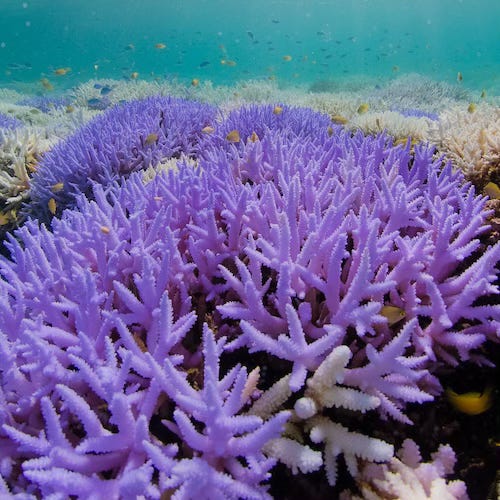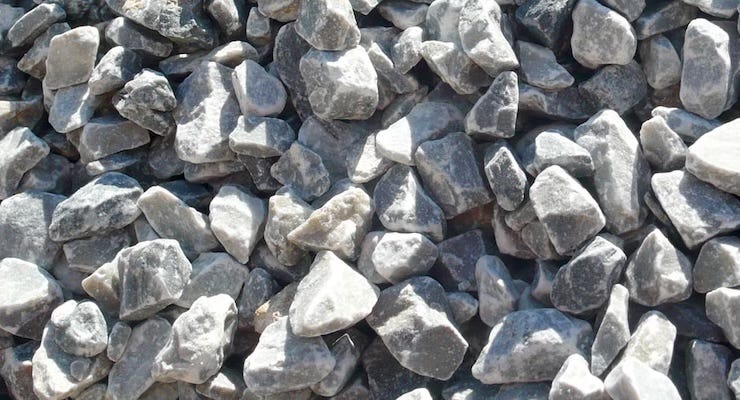Coral-Inspired Solutions: Innovative Approaches To Lowering CO₂
The biomimetic approach to creating CO₂-absorbing building materials advances science, providing democratic solutions to climate change.
Biomimicry offers innovative solutions for carbon capture by emulating natural processes that efficiently manage carbon dioxide. These approaches range from mimicking coral mineralization to enzyme-based systems inspired by red algae, providing sustainable and energy-efficient alternatives to traditional methods.
In the previous post, "Parliament of Species," I wrote that for the first time in recorded history, the seasonal peak of atmospheric CO₂ at the Mauna Loa Observatory exceeded 430 parts per million (ppm) in May 2025. Because of this, the detrimental effects of climate change are increasing at an alarming rate; therefore, we need to take whatever necessary steps to achieve the Paris Climate goals.
As we are currently aware, there are two ways to decrease the amount of CO₂ in our atmosphere. One is to reduce the amount of human-made CO₂ released into the air, and the other is to develop methods to absorb it, thereby decreasing its climate-warming effects.
This post is about one method used to absorb it.
Coral-inspired mineralization is a biomimetic approach to carbon capture that emulates the natural process by which corals sequester carbon dioxide (CO₂) and build strong, resilient structures. This method is gaining attention for its ability to transform atmospheric or industrial CO₂ into durable, load-bearing materials suitable for construction and infrastructure.
How Coral-Inspired Mineralization Works
Natural Coral Process:
Corals absorb CO₂ from the atmosphere (via photosynthesis by symbiotic algae), combine it with calcium ions from seawater, and precipitate it as calcium carbonate (aragonite), forming their hard skeletons. This process, known as biomineralization, yields robust, fire-resistant, and self-healing structures.
Researchers and companies have translated this natural process into engineered systems.
Method
3D-Printed Polymer Scaffolds: Synthetic analogs of coral's organic templates are created using 3D printing. These scaffolds are then coated with a conductive layer and placed in a calcium chloride solution.
Electrochemical Mineralization: CO₂ (from air or industrial sources) is introduced into the solution. Using an electric current, CO₂ is converted into bicarbonate ions, which react with calcium ions to form calcium carbonate. This mineral gradually fills the scaffold, resulting in a dense, rigid composite that mimics the structure and properties of coral skeletons.
Material Properties: The resulting composites exhibit exceptional mechanical strength, fracture toughness, fire resistance, and self-healing properties. They are suitable for use as building materials, offering a scalable, modular approach to carbon-negative construction.
Blue Planet Systems: One company has commercialized the process.
Their technology uses CO₂ (from flue gas or direct air capture) and calcium from industrial waste (like demolished concrete or steel slag) to produce synthetic limestone aggregate.
This aggregate can replace quarried limestone in concrete, permanently locking away CO₂ in a mineral form that remains stable even after the building is demolished.
The process is cost-effective, does not require CO₂ purification, and valorizes industrial waste, making it both environmentally and economically attractive.
Advantages Of Traditional Carbon Capture
Permanent sequestration: CO₂ is stored as a stable mineral, not as a temporary gas or liquid.
High efficiency: The process is more efficient and cost-effective than conventional carbon capture and storage (CCS) methods, with up to 25 times higher carbon sequestration efficiency compared to some existing approaches.
Sustainable materials: The resulting products are strong, fire-resistant, and can be used directly in construction, supporting circular economy principles.
Dozens of other companies and academic groups are promoting the same theory: that sinking rocks, nutrients, crop waste, or seaweed in the ocean could trap climate-warming carbon dioxide for centuries or more. Nearly 50 field trials have taken place over the past four years, with startups raising hundreds of millions in early-stage funding.
In the subtitle, I wrote that "carbon capture provides democratic solutions to climate change."
An example of this is the Inflation Reduction Act. During the presidency of Joe Biden, the IRA was enacted. It allocated hundreds of billions of dollars to incentivize renewable energy, energy efficiency, and clean transportation through tax credits and rebates.
This act was implemented through our democratic government, which was created by the people, for the people, and of the people. In contrast to the current administration, the Biden Presidency sincerely believed in True Democracy, which was developed to enhance the lives of all people, not just the wealthy or corporations.
It's up to us to take action for ourselves, our children, and future generations if we take seriously our responsibility as guardians of Mother Nature.
Please review the suggestions below to join the various environmental and resistance groups working towards a more representative form of governance.
Please remember the NO KINGS protest on Flag Day, June 14th.
Thank you so much for reading my posts!
To learn more about Biomimicry
biomimicry.org
To take classes in Biomimicry
For a great example of decorum and civility with strength and conviction, I would recommend watching videos on Schiff Notes featuring Senator Adam Schiff. To protect our Democracy, I suggest the following:
Please Join Advocacy groups like Indivisible and receive your political information from the unedited Substack posts.
Four out of many Law Firms fight for Democracy every day!
Elias Law Group, Democracy Forward, Public Citizen, and CREW
For a summary of legal and Democracy Resistance updates, see






